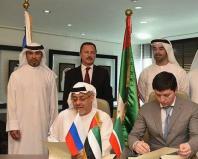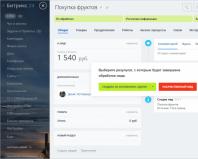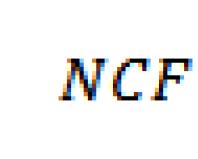Presentation "Heroes of the Fatherland" on history - project, report. Day of Heroes of the Fatherland, presentation for lesson (7th grade) on the topic Download presentation about Heroes of the Fatherland RT
Day of Heroes of the Fatherland
Presentation for elementary school

On this day, Heroes of the Soviet Union are honored,
Heroes of the Russian Federation,
Knights of the Order of St. George
and the Order of Glory.

This date was set in 2007 and dedicated to
to the events of the reign of Catherine II.
The Empress established the order in 1769
Saint George the Victorious.
This order was awarded to warriors who demonstrated
valor, courage and courage.

George the Victorious -
one of the popular
christian saints
The symbol of the order - a rider sitting on a white horse, striking a dragon with a spear - personified the courage of a warrior capable of defending his land from enemies.

Catherine II
honored herself
this award in honor
institutions
orders
St. George the Victorious

The full name of the order is Imperial Military Order
Holy Great Martyr and Victorious George
The order had 4 degrees of distinction,
of which the first was the highest

Motto of the order: "For Service and Bravery"
The order consists of signs:
gold cross, ribbon and four-pointed star.
The order was worn by:
I degree – cross on a ribbon 10 cm wide
over the right shoulder, a star on the left side of the chest.
II degree - a cross on the neck on a ribbon 5 cm wide, a star on the left side of the chest.
III degree – cross on the neck on a ribbon 3.2 cm wide
IV degree – cross on the chest on a ribbon 2.2 cm wide

Full holders of the order, that is, having
all four degrees are four
outstanding Russian commanders:
- prince, field marshal general
M. I. Golenishchev-Kutuzov-Smolensky;
- prince, field marshal general
M. B. Barclay de Tolly;
- count, field marshal general
I. F. Paskevich-Erivan Prince of Warsaw;
- count, field marshal general
I. I. Dibich-Zabalkansky.

Mikhail Illarionovich
Golenishchev-Kutuzov
First full holder of the order
St. George
Russian commander,
Field Marshal General
Holy Prince,
hero of the Patriotic War
1812.

Mikhail Bogdanovich
Barclay de Tolly
Full Knight of the Order of St. George
Outstanding Russian
commander,
Field Marshal General
Minister of War,
prince,
hero of the Patriotic War
1812.

Order of Glory
The heroism of Soviet people in battles
with the Nazis turned out to be massive.
There is a need
set a new reward.
This order was approved on November 8, 1943 of the year.
According to the statute, it was awarded to privates and sergeants of the Red Army
for personal exploits on the battlefield.

Order of Glory, 1st class
Order of Glory II degree
Order of Glory III degree
The badge of the Order of the 1st degree was made of gold.
Badges of II and III degrees are made of silver.
The circle depicting the Kremlin with the Spasskaya Tower is gilded.

Full Knight of the Order of Glory
The first full recipients of this award were
senior sergeant K. Shevchenko and corporal M. Pitenin

Sergey Afanasyevich Makarov -
first Knight of St. George
Russian Federation in 2008
S.A. Makarov commanded the North Caucasus Military District.
- Years of service 1970 - 2010
- Rank Colonel General
- Battles/wars Second Chechen War
War in South Ossetia

Awards
Order of St. George IV degree – for courage,
courage and dedication shown during
fulfillment of duty in the North Caucasus region
Order "For Merit to the Fatherland"
IV class with swords
Order of Military Merit
Order
"For service to the Motherland in the Armed Forces of the USSR"
III degree

There is the highest happiness in the world,
Keeping love and hope,
Leave your mark on the planet
For the sake of the coming day.
Kirimize Zhanne
On the Day of Heroes of the Fatherland
we pay tribute to gratitude,
respect and memory to all,
who accomplished feats
for the glory of the Motherland.
Presentation for a class hour dedicated to the Day of Heroes of the Fatherland. The presentation addresses the following questions: who is a hero, the history of the Fatherland Heroes Day holiday, heroes of the past and present. Presentation for students in grades 5-9.
Download:
Preview:
To use presentation previews, create a Google account and log in to it: https://accounts.google.com
Slide captions:
Day of Heroes of the Fatherland Completed by: Shadrina N.N. MAOU Secondary School No. 67, Ekaterinburg
December 9 - Fatherland Heroes Day December 9 According to the Federal Law of the Russian Federation No. 22 of February 28, 2007 “On Amendments to Article 1-1 of the Federal Law “On Days of Military Glory and Memorable Dates of Russia”, an addition was made that “ In the Russian Federation, the following memorable dates for Russia are established: December 9 - Day of Heroes of the Fatherland
Who are the heroes? A hero is a person who has committed or is committing noble deeds that involve risking his life. “Do heroes exist in Russia today?” Heroes exist wherever there is a person.
History of the holiday In 2007, the holiday of Heroes of the Fatherland was only restored.
On December 9, 1769, Empress Catherine II approved a new state award. It became the Order of St. George the Victorious. This order was awarded only to people who showed exceptional courage and valor on the battle fronts. On December 9, 1917, Russia began to celebrate the Feast of the Knights of St. George. However, after the Great October Revolution, this celebration was removed altogether.
Heroes of the Fatherland: past and present Heroes of the Fatherland are our fellow countrymen. However, not every Russian can be honored to receive this prestigious award today. The most frequent “laureates” of this holiday are senior and junior officers. On December 9, Heroes of the Soviet Union, Heroes of the Russian Federation, holders of the Order of St. George and the Order of Glory are honored.
M.I. Kutuzov Mikhail Illarionovich Golenishchev-Kutuzov (since 1812, His Serene Highness Prince Golenishchev-Kutuzov-Smolensky; 1747-1813) - Russian commander, field marshal general from the Golenishchev-Kutuzov family, commander-in-chief of the Russian army during World War II 12 years old. The first full holder of the Order of St. George.
G.K. Zhukov ZHUKOV GEORGE KONSTANTINOVICH (1896-1974) - Four times Hero of the Soviet Union, holder of two Orders of Victory, many other Soviet and foreign orders and medals. G.K. Zhukov remained in history as one of the main creators of Victory in the Great Patriotic War.
In the Great Patriotic War, cities became heroes. In the Great Patriotic War, not only people, but also cities became heroes. Leningrad (now St. Petersburg) - from May 1, 1945 Stalingrad (now Volgograd) - from May 1, 1945 Sevastopol - from May 1, 1945 Odessa - from May 1, 1945 Kiev - from May 8, 1965 Moscow - from May 8, 1965 Brest Fortress (Hero Fortress) - from May 8, 1965 Novorossiysk - from September 14, 1973 Kerch - from September 14, 1973 Minsk - from June 26, 1974 Tula - from December 7, 1976 Murmansk - from May 6, 1985 Smolensk - from May 6, 1985
Heroes of our time Hero of the Russian Federation is a state award of the Russian Federation - the highest title awarded for services to the state and people associated with the accomplishment of a heroic feat. The Hero of the Russian Federation is awarded a sign of special distinction - the Gold Star medal. The title was established on March 20, 1992 and came into effect on the same day according to a resolution of the Supreme Council of the Russian Federation. The title of Hero of the Russian Federation is awarded by the President of the Russian Federation once.
Preview:
To use presentation previews, create a Google account and log in to it: https://accounts.google.com
Slide captions:
Hero of Russia is a title awarded for services to the state and people associated with the accomplishment of a heroic feat.
In 2007, on the initiative of the country's President Vladimir Putin, a change was made to the federal law of the Russian Federation “On Days of Military Glory and Memorable Dates of Russia”; December 9 was established as the Day of Remembrance of Heroes of the Fatherland.
In Russia, on December 9, Heroes of the Soviet Union, the Russian Federation, holders of the Order of St. George the Victorious and holders of three degrees of the Order of Glory are honored. Until 1914, the Feast of the Knights of St. George was celebrated on this day in Russia. Since the beginning of the First World War, it has been called Heroes' Day.
In the history of our Fatherland, the date December 9 had special significance. According to legend, it was on this day that Saint George the Victorious, revered in Rus' as the patron saint of the Russian army, defeated the serpent. In 1036, Yaroslav the Wise, in honor of the final victory over the Pechenegs, ordered to honor this saint.
In 1769, Catherine the Second established the military Order of St. George, which became the highest military award of the empire. The order had four degrees, any of which gave the rights of a hereditary nobleman. Since 1849, the names of his gentlemen were written on marble plaques in the St. George Hall of the Kremlin. Throughout pre-revolutionary history, 25 people were awarded the insignia of the 1st degree, 125 people were awarded the 2nd degree, and 650 were awarded the 3rd degree. The insignia of the order is a golden cross covered with white enamel. A gold four-rayed diamond-shaped star. A yellow-black ribbon.
In 1917, all orders of Tsarist Russia were abolished, and the holiday was forgotten. New awards appeared that were awarded to heroes of Soviet history. In the Soviet Union, in April 1934, the Title of Hero of the Soviet Union was established. And the first Heroes were the seven pilots who saved the crew of the icebreaker Chelyuskin from an ice floe in the Chukchi Sea.
The last Hero of the USSR was a military aquanaut, Captain 3rd Rank Anatoly Solodkov, who in 1991 made a record dive to a depth of 120 meters. In total, over 13 thousand people were awarded this high title.
On November 8, 1943, the Order of Glory was established in the USSR. It was intended to reward privates and sergeants. The first holder of the order, 3rd degree, was sapper Vasily Malyshev. Until 1945, 980 thousand people became holders of the order of the 3rd degree, 46 thousand - 2nd degree, and 2 thousand 562 people - full holders.
In 1975, full holders of the Order of Glory received equal rights with Heroes of the Soviet Union. The Order of St. George and the insignia - the St. George's Cross were returned to the Russian Federation in 1992. Hero of the Russian Federation and a sign of special distinction - the Gold Star medal were established on March 20, 1992.
The first to be awarded the title of Hero of the Russian Federation was the head of the Lipetsk center for combat training of flight personnel, Aviation Major General Sulambek Susarkulovich Oskanov (Decree of the President of the Russian Federation No. 384 of April 11, 1992 - awarded posthumously). While performing a flight mission on a MiG-29 aircraft on February 7, 1992, a technical failure occurred, and General Oskanov, at the cost of his life, prevented the plane from falling on a populated area. The widow of S. S. Oskanov was awarded the Gold Star medal No. 2, because they decided that Hero of Russia No. 1 should have been alive.
The Gold Star medal No. 1 was awarded to pilot-cosmonaut Sergei Konstantinovich Krikalev for performing a long-term space flight at the Mir orbital station. The title of Hero of the Russian Federation was awarded to him by decree of the President of the Russian Federation on the same day (April 11, 1992), but by a later decree (No. 387).
Sergei Aleksandrovich Solnechnikov Hero of the Russian Federation (2012). Russian officer, major of the signal troops, who at the cost of his life saved the soldiers subordinate to him in the explosion of a military grenade.
On March 28, 2012, during a training exercise for a conscript soldier, 19-year-old private Maxim Zhuravlev unsuccessfully threw an RGD-5 grenade from a standing position. The ammunition hit the edge of the front parapet enclosing the firing position, ricocheted and flew into the kill zone of his colleagues. The major instantly realized what had happened, pushed the confused soldier away and covered the grenade with himself. An hour and a half later, the major died on the operating table from injuries incompatible with life.
On April 2, 2012, S. A. Solnechnikov was buried with military honors at the city cemetery in the city of Volzhsky, Volgograd region. On April 2, 2012, the Duma of Blagoveshchensk decided to name one of the streets of the new quarter of the city after Sergei Solnechnikov. On April 24, 2012, a memorial stele to Major Sergei Solnechnikov was unveiled in Belogorsk. On May 7, 2012, a slab with a star was installed on the Walk of Fame in Belogorsk in memory of the Hero of Russia, Major Sergei Solnechnikov.
Major Sergei Solnechnikov accomplished his feat exactly ten years after the same feat of Hero of Russia Sergeant S. A. Burnaev. On March 28, 2002, during a special operation in the city of Argun, Chechen Republic, Sergei Burnaev covered a grenade thrown by militants with his body and died in the same way, protecting his comrades.
Andrey Alekseevich Turkin (October 21, 1975, Orsk, USSR - September 3, 2004, Beslan, North Ossetia - Alania, Russia) - officer of Directorate "B" (Vympel) of the Special Purpose Center of the Federal Security Service of the Russian Federation , a lieutenant who died during the liberation of hostages during the terrorist attack in Beslan. Posthumously awarded the title of Hero of the Russian Federation (medal No. 830). Together with the Vympel group, Andrei Turkin arrived in the city of Beslan in the Republic of North Ossetia-Alania, where on September 1, 2004, a group of 32 terrorists captured over a thousand children and adults in school building No. 1
After explosions occurred on the third day in the gym where most of the hostages were kept, causing a partial collapse of the roof and walls of the gym, the surviving people began to scatter. Andrei's assault group received orders to storm the building, as the militants opened fierce fire on the hostages. Even at the beginning of the assault, Turkin was wounded when, as part of his unit, under heavy fire from militants, he burst into the school building, but did not leave the battle.
Covering the rescue of the hostages with fire, Lieutenant Turkin personally destroyed one terrorist in the dining room, where the militants had driven many of the hostages who survived the explosions in the gym. When another bandit threw a grenade into a crowd of people, Andrei Turkin covered them with his body, saving the hostages at the cost of his own life.
In the Krasnodar Territory, in the village of Dinskaya, MBOU Secondary School No. 1 bears his name. In the city of Krasnodar, on the building of the Academy of Marketing and Social Information Technologies (IMSIT), where Andrei Turkin studied, a memorial plaque was installed in memory of the hero’s feat. He was buried at the Nikolo-Arkhangelskoye cemetery in Moscow. In the Hero’s homeland in the city of Orsk, in the Heroes’ Square on the Walk of Fame, a bust of the Hero of Russia was installed. The name of the Hero of the Russian Federation, Lieutenant Andrei Turkin, was assigned to the cadet class of Orsk Cadet School No. 53.
On November 25, 2015, Russian President Vladimir Putin signed a decree “On awarding state awards of the Russian Federation to military personnel of the Armed Forces of the Russian Federation” participating in military operations in Syria.
Among them is Lipsk resident Oleg Peshkov, the deceased pilot of a Su-24 bomber shot down in Syria on November 24, 2015. For heroism, courage and bravery shown in the performance of military duty, Lieutenant Colonel Oleg Anatolyevich Peshkov was awarded the title of Hero of the Russian Federation (posthumously)
1 The surviving navigator of the Russian bomber, Captain Konstantin Murakhtin, was awarded the Order of Courage. Lipchanin Konstantin Murakhtin in 2014 was a navigator in the crew of Stanislav Gasanov at the Aviadarts-2014 competition. This crew became the best in the Front-line Bomber Aviation category. Captain Murakhtin is 39 years old, lives in Lipetsk, and graduated from the Chelyabinsk Red Banner Military Aviation Institute of Navigators in 1998.
Heroes are not born, heroes become in times of trial. They write poems about exploits. They create songs about fame. “Heroes never die, Heroes live in our memory!”




